Building your own road bike can be an exciting and rewarding project. Not only does it give you the chance to customize your bike to fit your preferences, but it also allows you to gain a deep understanding of how your bike works. In this guide, we'll walk you through the process step by step.
Step 1: Gather Your Materials
The first step in building your own road bike is gathering all the necessary components. These include:
- Frame
- Fork
- Headset
- Stem
- Handlebars
- Seatpost
- Saddle
- Groupset (including gears, brakes, shifters, crankset, bottom bracket, chain, and cassette)
- Wheels
- Tires
- Pedals
Step 2: Install the Headset and Fork
Begin by installing the headset into the frame. The headset is what allows the fork and the front wheel to turn smoothly. Once the headset is installed, slide the fork through the head tube of the frame and secure it according to the manufacturer's instructions.
Step 3: Install the Stem and Handlebars
Next, install the stem onto the top of the fork. The stem is what holds the handlebars in place. Once the stem is secure, attach the handlebars.
Step 4: Install the Seatpost and Saddle
Slide the seatpost into the frame and secure it at your preferred height. Then, attach the saddle to the seatpost.
The groupset includes all the components that make your bike move and stop. Start by installing the bottom bracket and crankset, then add the front and rear derailleurs, the brakes, and finally, the shifters.
Step 6: Install the Wheels and Tires
Once the groupset is installed, it's time to add the wheels. Once they're secure, you can install the tires and inflate them to the recommended pressure.
Step 7: Install the Pedals
The final step is to screw the pedals into the crank arms.
Step 8: Fine-Tune Your Bike
Now that your bike is fully assembled, it's time to fine-tune everything. Adjust the saddle height and angle, the handlebar angle, and the brake and shifter positions to fit your preferences. Also, make sure to adjust the front and rear derailleurs for smooth shifting.
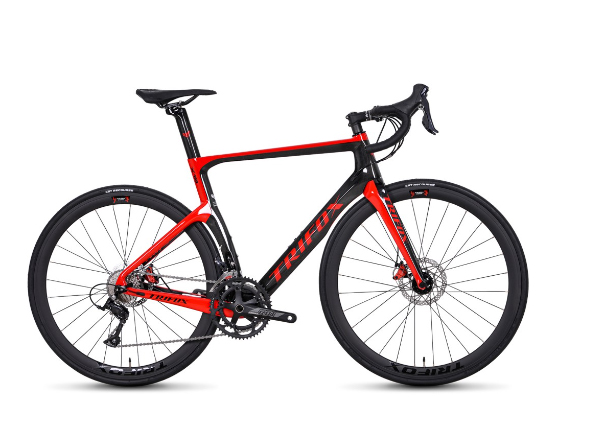
Conclusion
Building your own road bike can seem like a daunting task, but with the right tools, some patience, and this step-by-step guide, it's an achievable project. Plus, the satisfaction of riding a bike that you've built yourself is hard to beat. Happy building!
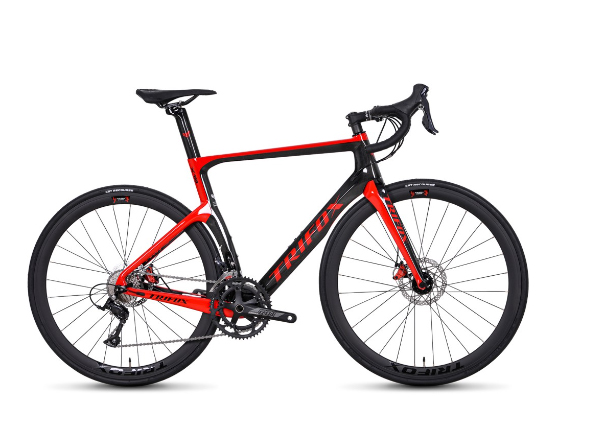
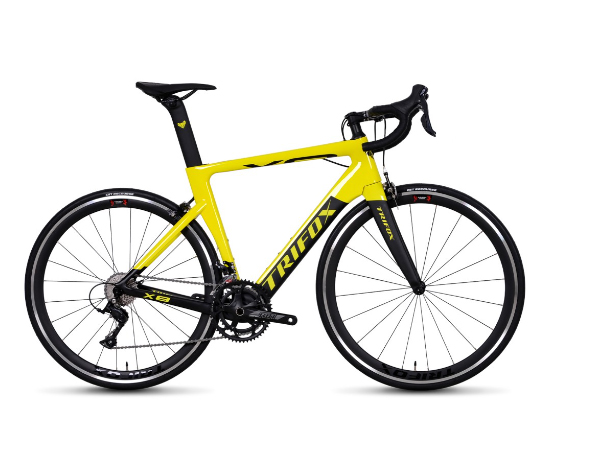
Choosing the ideal road bike for your biking activities is far from easy. With a plethora of bike reviews and recommendations available on the internet, finding the perfect road companion has become increasingly challenging. However, paying close attention to specific characteristics such as frame material, weight, drivetrain, and wheel selection can help you decipher bike reviews and choose the best road bike that suits your needs.
1. Frame Material:
The frame material is perhaps the most important factor to consider when selecting a road bike. Most bike manufacturers use lightweight material such as carbon fiber, aluminum, titanium, and steel to reduce the overall weight of the bike. Carbon fiber is the most popular material used in making high-end road bikes because of its lightweight, durable, and stiff qualities. Aluminum and titanium are also great options for mid-range bikes as they are strong, light, and affordable. Steel, on the other hand, is an excellent choice for people looking for a comfortable ride as it absorbs shocks better than the other materials.
2. Weight:
The weight of the road bike is another essential factor to consider when reading bike reviews. A lightweight bike means better acceleration, handling, and easier uphill climbing, making it a perfect choice for racing and long rides. However, the flip side is that lightweight bikes are costlier than heavier ones. A heavier bike, on the other hand, is a suitable option for beginners and those who prefer more stability on the road.
3. Drivetrain:
The drivetrain system of the bike is the component responsible for transferring the power from the pedals to the wheels. The number of gears a bike has, the type of shifters it features, and the range of gears it can achieve are all critical factors to look at when reading bike reviews. Most modern road bikes feature either a 2x or 3x drivetrain system with the 2x being the popular choice. However, each option has its advantages depending on your biking style and daily riding activities.
4. Wheel Selection:
Wheel selection is another critical factor to consider when decoding bike reviews. Wheels play a crucial role in determining the handling, speed, and comfort of the bike. Most high-end road bikes feature lightweight and aerodynamic carbon fiber wheels that enhance rolling resistance and speed. However, alloy wheels are a great option for people looking for affordable yet functional wheels.
5. Bike Fit:
Proper bike fit is essential to ensure that your riding experience is as comfortable and enjoyable as possible. When reading bike reviews, look for features such as saddle height, bike frame size, saddle angle, and handlebar position to determine whether the bike is an excellent fit for you. Additionally, make sure to test ride the bike personally to ensure that it feels comfortable and stable during riding.
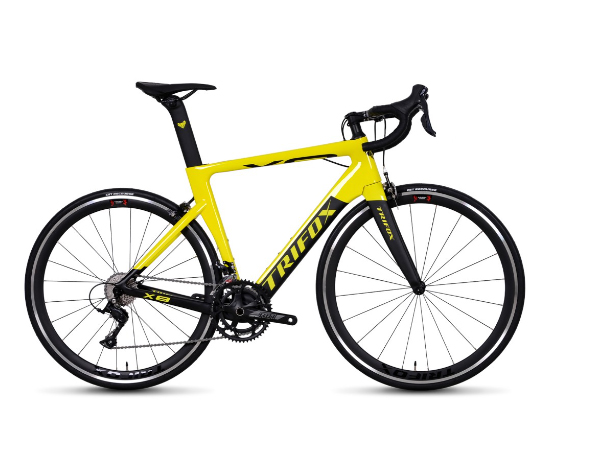
Choosing a road bike that meets your biking needs can be challenging, but paying close attention to essential factors such as frame material, weight, drivetrain, wheel selection, and bike fit can help you decipher bike reviews and select the perfect bike for you.
Remember to also consider your budget and personal preferences when selecting your bike as they'll play a significant role in your biking experience. With this guide, we hope that you can choose the perfect road companion that'll help you enjoy riding for years to come. Happy biking!
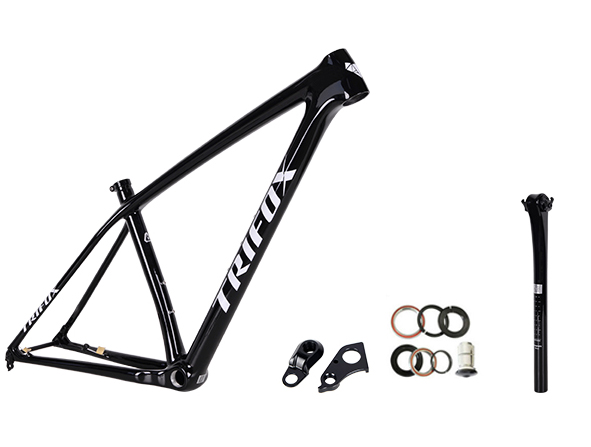
If you're looking to upgrade your off-road biking experience, investing in a light hardtail MTB (Mountain Bike) frame is the perfect place to start. A hardtail frame offers better power transfer and control compared to full suspension frames, which make them ideal for mountainous terrains, technical trails, and cross-country riding. However, with multiple models and brands on the market, it can be daunting to choose the ideal Lightest hardtail MTB frame for your needs.
1. Material
The frame's material plays an essential role in determining its weight, stiffness, durability, and comfort. The most common materials used for hardtail MTB frames include Aluminum, Steel, and Carbon Fiber. Steel is the heaviest, but it offers superior durability, smooth riding experience, and affordability. Aluminum is a popular choice due to its lightweight, stiffer ride, and affordability. However, it can be uncomfortable on rough terrain compared to steel. Carbon Fiber is the lightest and stiffest material, which offers unparalleled comfort, shock absorption, and speed. It's the most expensive option but ideal for professional riders or enthusiasts who want the best.
2. Geometry and Fit
The frame's geometry affects its handling, speed, and comfort. The ideal hardtail MTB frame should have a balanced geometry that offers stability, cornering, and speed. You should pay attention to the frame's Head Tube Angle, Top Tube length, Chainstay length, Bottom Bracket height, and seat angle. Also, ensure that the frame size fits your height and riding style. A frame that's too big or small can affect your balance, control, and safety on the trail.
3. Suspension
The hardtail MTB frame offers front suspension, which is essential for shock absorption and comfort. However, you should choose a suspension fork that complements your riding style, the terrain you ride in, and your weight. The suspension fork should have adjustable damping, compression, and rebound to maximize your performance. It would be best to choose a lightweight fork to reduce the overall weight of the frame. Look for forks made from Carbon Fiber or Magnesium.
4. Wheels and Tires
The wheels and tires are crucial components of a hardtail MTB frame, which affect your traction, speed, and comfort. The wheels should be robust and lightweight, with optimized spoke patterns to handle rough terrain and reduce weight. The tires should offer the right balance between traction, speed, and comfort. You should consider the type of terrain you ride in, weather conditions, and your riding style when choosing the tires.
5. Budget
Finally, you should consider your budget when choosing the ideal Lightest hardtail MTB frame. The frame's price varies based on the material, brand, features, and performance. You can find reliable yet affordable hardtail frames made from Aluminum or Steel. However, if you're an enthusiast or professional rider, investing in a Carbon Fiber frame can offer superior performance and riding experience.
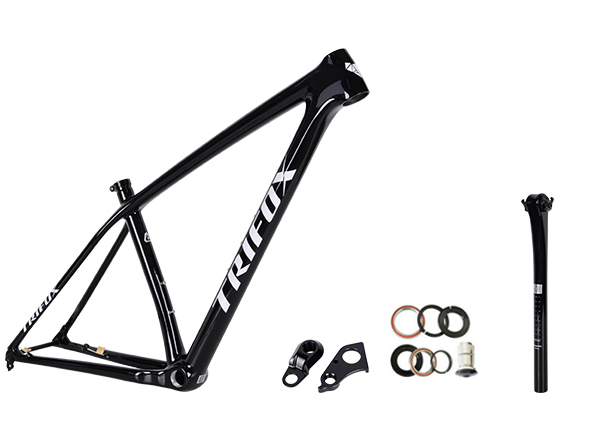
Investing in a lightweight hardtail MTB frame can take your off-road biking to the next level. However, choosing the ideal frame requires careful consideration of various factors, including the material, geometry, suspension, wheels, tires, and budget. We hope this guide has equipped you with the knowledge to make an informed decision when choosing your next frame. Enjoy your next adventure!
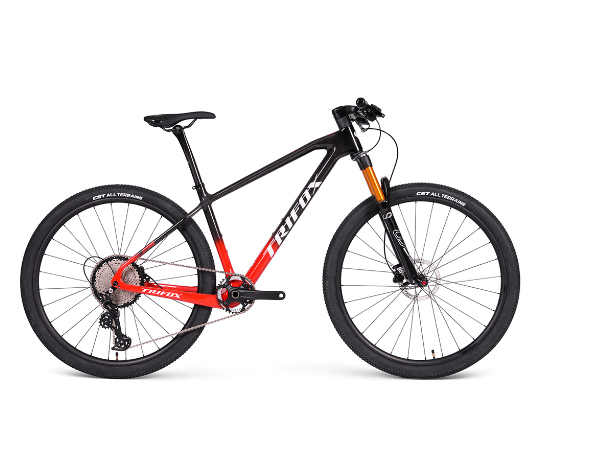
Carbon Drive Mountain Bikes are known for their durability, lightness, and low maintenance requirements. The carbon fiber frame reduces the bike's weight while providing high levels of strength and stiffness to withstand various terrains. Therefore, caring for your carbon drive mountain bike is important for the longevity and performance of the bike.
1. Clean Your Bike After Every Ride: After every ride, it is essential to clean your carbon drive mountain bike. The bike gets covered in dirt, mud, and dust, which can clog the drivetrain and affect its performance. Use a mild bike cleaner to remove the dirt from the bike frame, chain, and gears. Use a soft-bristled brush to scrub the chain and gears, and rinse with water. Avoid using a pressure washer, which can damage the bike's bearings and seals.
2. Check the Carbon Drive System: The carbon drive system is the core of your mountain bike, and it is essential to regularly check the drive system for wear and tear. Inspect the chainring teeth for damage, check for any loose bolts, and ensure the chain tension is correct. Unlike a chain drive system, a carbon drive cannot stretch, and the belt's teeth cannot be replaced. Hence, it is essential to replace the carbon drive system every 10,000 miles or every three years of use.
3. Lubricate the Carbon Drive System: The carbon drive system does not require regular lubrication like a chain drive system. However, it is essential to lubricate the carbon drive system after cleaning the bike or when riding in wet conditions. Lubricate the belt's teeth and the pulleys using a silicone-based lubricant, which does not attract dust or dirt.
4. Store the bike correctly: Where and how you store your carbon drive mountain bike is vital for the bike's longevity and performance. Always store the bike in a dry and cool place, away from sunlight and moisture, which can cause the frame to weaken. Hang the bike using a wall mount or a bike stand, and ensure the bike is not leaning against anything. Place the bike upside down when cleaning or doing maintenance, but never when storing it.
5. Regular Service and Maintenance: Your carbon drive mountain bike requires regular service and maintenance to ensure it performs optimally. Take your bike to a professional mechanic for a service every six months or after over 500 miles of use. The professional will clean the bike, check and adjust the carbon drive system, chain, and gears, and check the bike's brake pads, rims, and tires. Regular service and maintenance save you money in the long run and keep your bike in excellent condition.
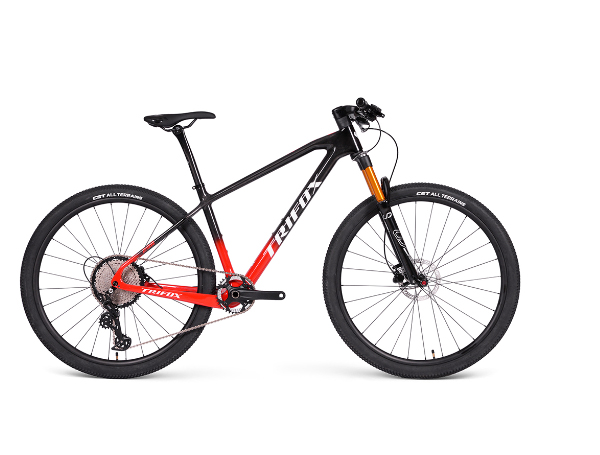
Caring for your carbon drive mountain bike is easy, and it doesn't require much effort, but it goes a long way. Simple steps, such as cleaning your bike after every ride, inspecting the carbon drive system for wear and tear, and storing it correctly, can keep your bike in top condition. Don't neglect the regular service and maintenance of your bike; it saves you money in the long run and ensures you have a bike that performs optimally. By following the tips above, you can take good care of your carbon drive mountain bike and enjoy your next ride in top condition.
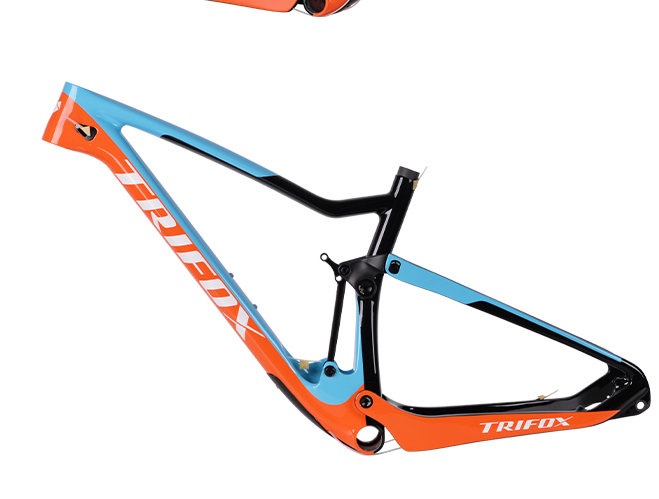
Mountain biking is a thrilling sport but can be tiresome when the ride is bumpy and rough. A good quality suspension system is integral to making your ride smoother and more comfortable, especially for beginners in the sport. Even experienced riders will tell you that the right suspension setup on your frame can make all the difference in ensuring that you have a great time on the trails.
1. Choose a Frame Suspension System That is Suitable for You
The first step in setting up your frame suspension is to choose a suitable setup that caters to your needs. Full suspension frames have a linkage system that connects the rear triangle to the shock and can give you greater comfort when riding over rough terrain. On the other hand, hardtail frames have a single suspension fork in the front and are good for riders who follow smoother terrain. The type of frame you select will depend on your riding style and the type of terrain you usually ride in.
2. Set Your Sag
The sag determines how much compression your bike experiences when you sit on it. The ideal sag should be set at 25-30% of your total shock stroke. This is important because it provides a good balance between responsiveness and a smooth ride. To set your sag, start by inflating your rear shock to its recommended pressure, hop on your bike with all your gear on, and cycle slowly and steadily for about 10 meters. Ask someone to assist you in measuring the distance between the seal of the shock and the o-ring. Adjust the air pressure in the shock accordingly until you achieve the desired sag.
3. Adjust Your Compression Damping
Compression damping controls how much your suspension will compress when your bike hits a bump, and slow down when it rebounds. Turning the dials on your shock and fork damper will adjust the compression damping, providing you with a stiffer or softer ride. Experiment with different settings until you find something that suits your riding style and the terrain you're riding in. It's important to note that a stiffer setting will help with climbing, while a softer setting will provide a smoother ride on downhill sections.
4. Adjust Your Rebound Damping
Rebound damping is responsible for controlling your bike's bounce rate after hitting a bump. Setting the rebound damping properly will prevent your bike from bouncing uncontrollably or rebounding too slowly. Too much rebound damping will make it feel harsher, while too little rebound damping will make it feel unstable. Adjust the rebound damping knob to find the appropriate level of resistance. Start by compressing your suspension fully, then release it and watch it rebound. A slow-motion rebound is a sign that you need to increase your rebound damping, while a fast rebound indicates that it's too high.
5. Regular Maintenance Checks
Now that you've set up your frame suspension, it's time to enjoy your smooth ride. However, you should remember that maintenance is key in keeping your suspension in good condition. Clean and lubricate your suspension periodically, check your air pressure, and make sure there isn't any oil leaking from the shocks. These maintenance checks will prevent early wear and tear on your suspension system, and give you a longer lifespan.
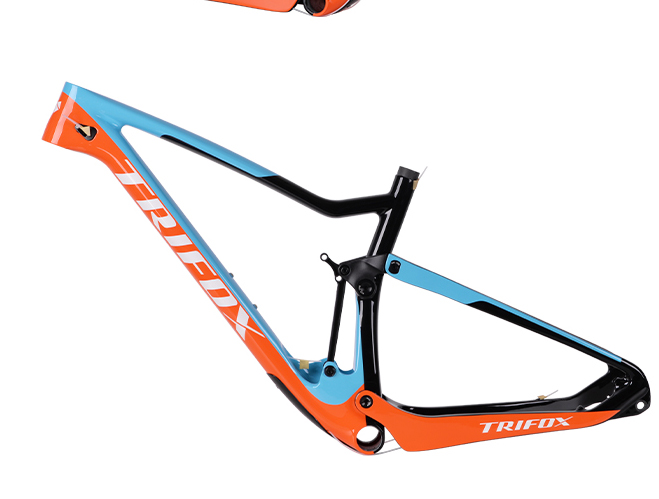
A frame suspension can make all the difference in ensuring a smooth and comfortable ride when mountain biking. Setting up and adjusting your frame suspension is relatively easy, and experimenting with different settings will help you find the perfect fit for your riding style and the terrain you're riding in. Don't forget to keep up with regular maintenance checks to ensure that your suspension lasts you a long time.
By doing so, you'll enjoy a more comfortable and confident riding experience that'll make you want to hit the trails time and time again.
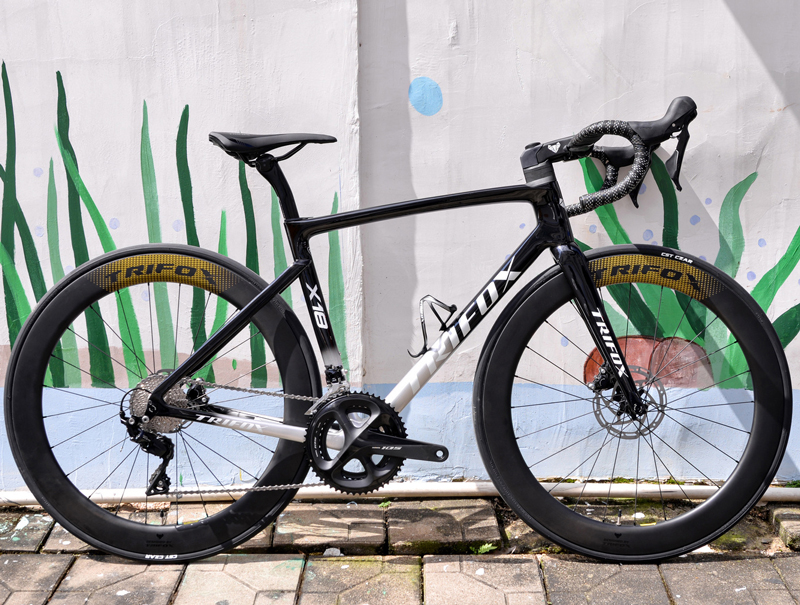
If you're a bike enthusiast, you might have heard about Chinese carbon frameset gravel bikes and the recent boom in the market. Carbon fiber has become a popular choice for bike frames over the years, thanks to its lightweight and durable properties. But the question is, are Chinese-made carbon framesets worth it?
Affordability - Chinese carbon frameset gravel bikes are priced much lower than their Western counterparts. The reason being is that labor cost and production cost are much lower in China. This means you can purchase a high-quality bike frame at a fraction of the cost of a Western-made frame.
Good Quality - There's a common misconception that Chinese-made carbon framesets aren't as sturdy as those made in the West. However, this is far from the truth. Some of the best components and materials used in bike manufacturing are sourced from China, and most of the Chinese-made frames are rigorously tested to ensure they meet international standards.
Customization - A lot of Chinese carbon frameset gravel bike manufacturers offer customization options. You can specify your preferred size, color, and even get your name printed on the frame. This level of customization can be difficult or impossible to achieve with Western and other foreign-made brands.
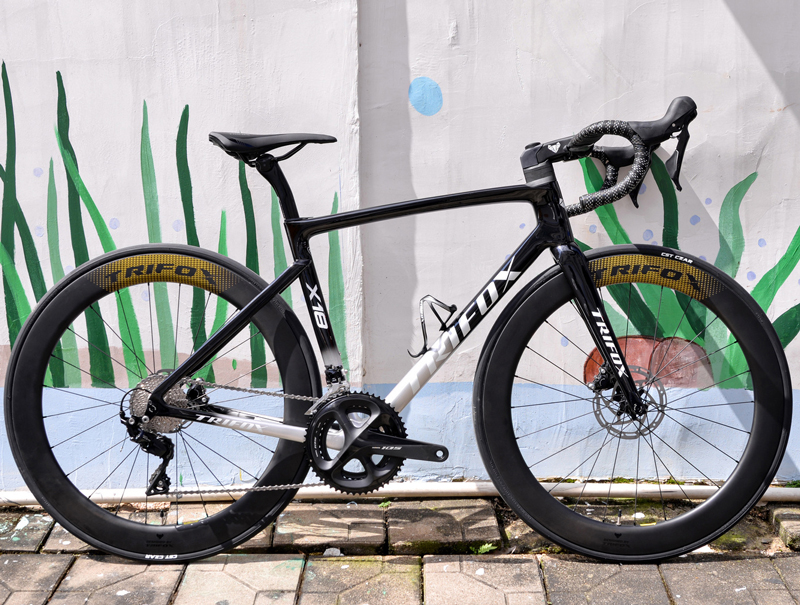
In conclusion, Chinese carbon frameset gravel bikes offer a lot of advantages. They're more affordable, customizable, and of good quality. However, like everything else, they have their drawbacks, such as warranty issues, lack of quality assurance, and delivery hassles. To make an informed purchase decision, do your research.
Choose a reputable Chinese bike manufacturer who follows high-quality standards and can offer dependable shipping and customer support, For example, Trifox bike.
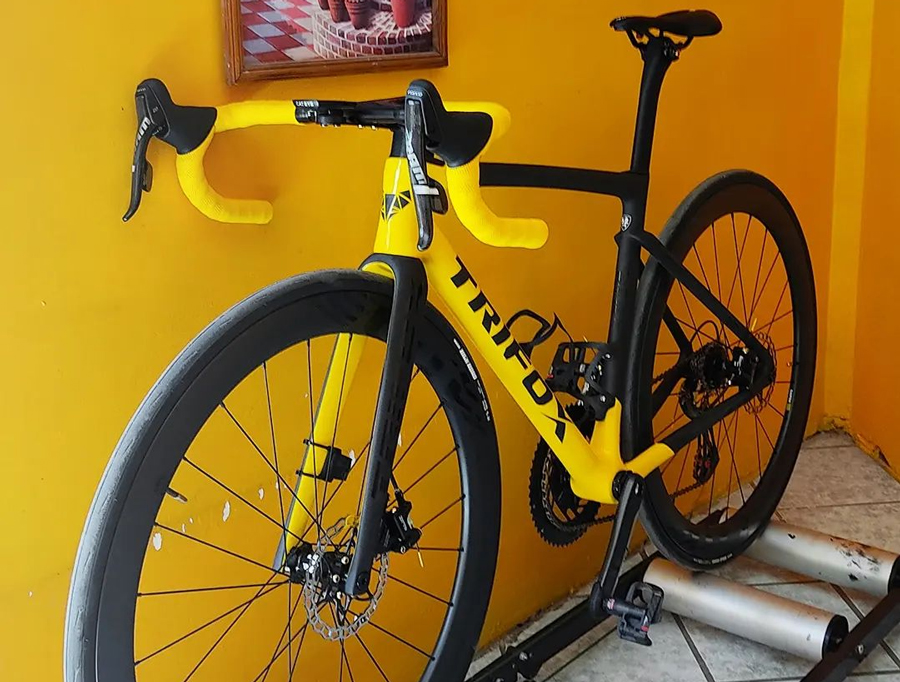
When it comes to maintaining your prized possession of a carbon bike, there's lots of conflicting information floating around about the best way to keep your frame looking clean and fresh. One of the most debated topics is whether or not it's safe to sanding carbon frame.
First things first, it's essential to understand the nature and function of a carbon fiber bike frame. Carbon fiber is a composite material comprised of carbon strands that are bonded together with resin. This composite arises from a sophisticated process and innovation from high tech industries, including aerospace, military, and racing autos. Carbon is an incredibly lightweight, strong, and stiff material. It's stiffer, stronger, and lighter than aluminum and more durable than titanium. That being said, carbon is also a delicate material and should be handled with care.
One of the most common reasons people will sand down their carbon bike frame is to remove a scratch or other cosmetic damage. Some suggest that sanding is necessary to remove damaged fibers. However, this is a myth. Sanding can't repair damage to your bike frame, and it may even take away essential protective fibers that keep your frame safe. In short, sanding should be avoided.
Another myth about sanding is that it can be used to prevent cracks and other damage. The truth is that sanding doesn't provide any additional protections against damage, and attempting to do so can significantly harm your bike frame's integrity. In some circumstances, sanding can even disintegrate the resin particles that hold the carbon fibers together, leading to structural damage from cracks and impacts.
There's also the myth that sanding is the only way to clean your bike frame. Cleaning a carbon bike frame is different from cleaning a steel or aluminum bike frame, but that doesn't mean you need to sand it down. Like any bike frame, a carbon frame can be cleaned with soap and water or a non-abrasive cleaning solution. In case of greasy parts or mud, avoid using a pressure washer; the pressure may damage the paint and cause damage to the rubber seals responsible for protecting the bearings.
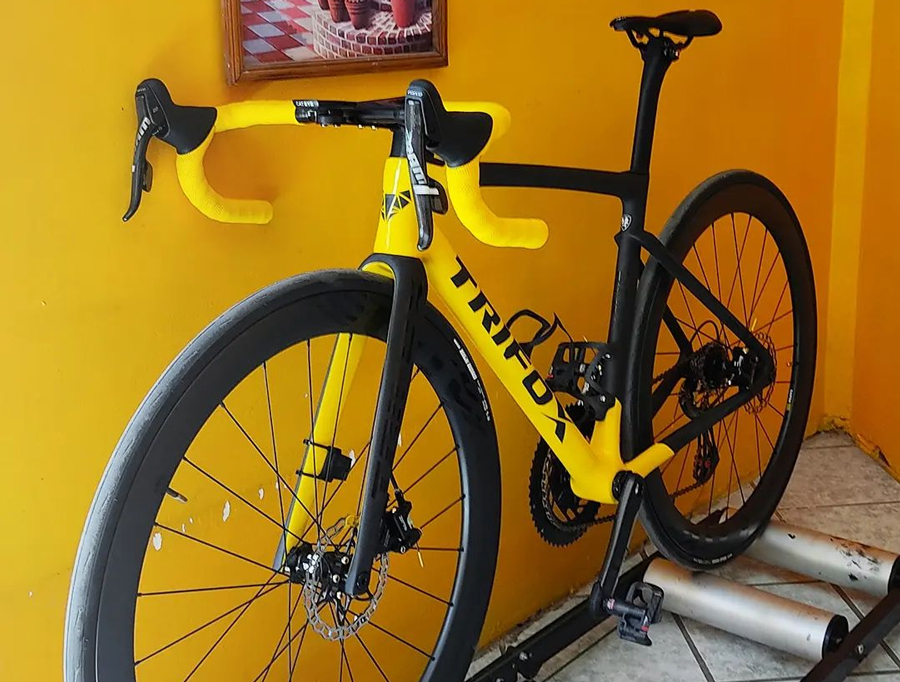
In summary, sanding your carbon bike frame should be avoided. Although carbon is a highly durable and lightweight material, it still requires proper cleaning and maintenance to maximize its lifespan and ride quality. Proper care involves avoiding abrasive soaps, minimizing exposure to UV rays, and using a protective bike cover during storage. Yes, sanded carbon frames may look smooth and new again, but this practice comes with undesirable and irreversible consequences.
By following simple cleaning tips and making a few adjustments to your maintenance routine, you can keep your carbon frame looking great and riding solid for years to come.
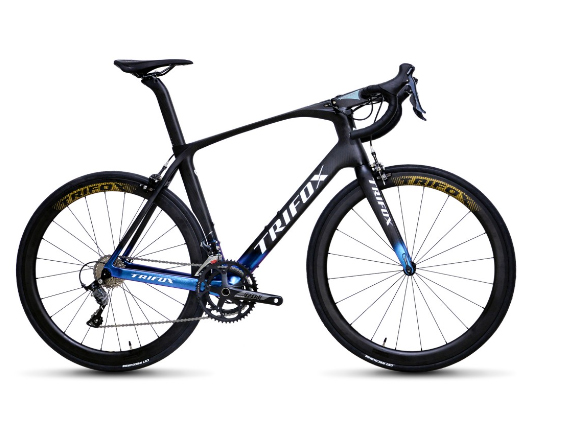
Aero road bikes have extremely crucial features that allow for a faster ride through air resistance reduction. Carbon fibre technology and the incorporation of aerodynamics have greatly improved the performance of the modern road bike in comparison to the traditional one. Here is what you need to know about aero road bikes that will help you make an informed decision.
1) AERO ROAD BIKE FRAME
An aero bike frame is designed to reduce air resistance which makes it more aerodynamic. The frame plays a crucial role in the aerodynamics of the bike because it is the first point of contact with the wind. Aero road bike frames are designed to be thin, dynamic, and sleek because this reduces the surface area which makes a lot less for the wind to push against. It is, therefore, important to choose a frame that is both aerodynamic and structurally sound for a safe and fast ride.
2) WHEELS
The wheels of an aero bike add to its aerodynamic properties. Different wheel designs typically have different levels of drag and lift coefficients, which determine their aerodynamic performance. Aero road bikes usually have deep dish rims, which provide the bike with a more stable ride in crosswinds and aid in reducing drag coefficient. The wheels should be wider than traditional road bikes and made of high-grade carbon fiber materials to enhance the stiffness and reduce weight.
3) HANDLEBARS
Handlebars of an aero road bike are designed to steer the bike when cycling and should be leaned on when racing. The unique handlebars can come in a variety of shapes ranging from oval, square, or teardrop, but they all play a significant role in reducing drag while the cyclist is in an aggressive riding position. The ideal handlebars should provide comfort to the rider and promote a low, aerodynamic riding position.
4) FIT
An essential aspect of aero road bikes is the rider's fit to the bike. It is crucial to ensure that the bike fits the rider correctly. A bike that is too small or too large causes discomfort for the cyclist. A good fit is necessary for effective power transfer from the rider to the bike; this makes the experience more enjoyable, with less energy waste. Before purchasing an aero road bike, it is advisable to conduct bike fitting to ensure compatibility with your body size and riding style.
5) COST
Aero road bikes are in high demand due to their high-quality features, which translates to cost. They are generally more expensive compared to traditional road bikes. You get what you pay for, but this does not mean that you must break the bank to own one. Choose an aero road bike that is within your budget range and still has the necessary features for your desired purpose.
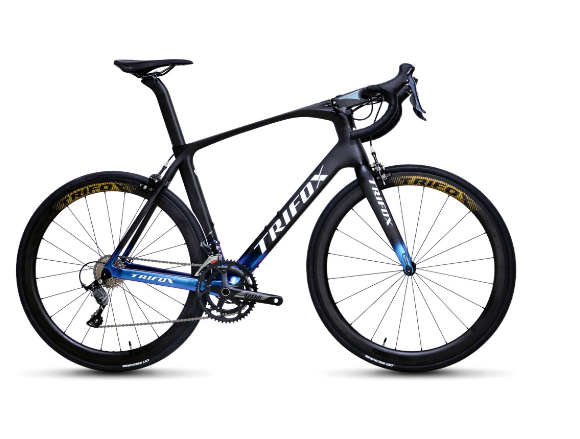
Buying an aero road bike requires some thought and research. Please make sure you take your time to evaluate the different options in the market carefully. Consider the frame structure, wheels, handlebars, fit, and cost. An aero road bike with the right specifications will provide an excellent cycling experience and ride much faster. Remember, the right bike is the one tailored to suit your specific riding needs and will help you achieve your goals.
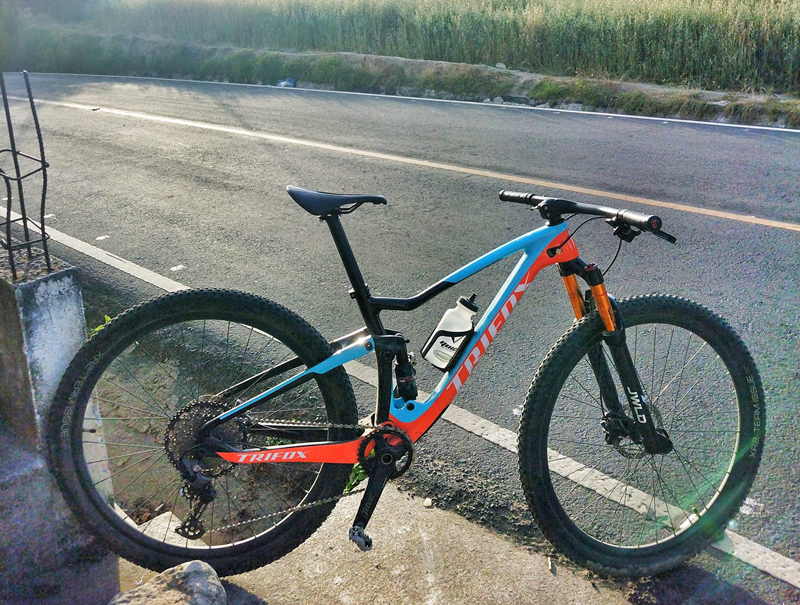
Mountain biking offers a unique experience for those who enjoy the thrill of the outdoors, the rush of speed, and the satisfaction of exploring new terrain. But for 1.70m tall riders, getting the perfect mountain bike can be a daunting task. That's why we've done the research for you and recommend Trifox mountain bike frames as the ultimate choice for all levels of mountain biking enthusiasts who are of average height.
1. Trifox Mountain Bike Frames: The Perfect Match for 1.70m Tall Riders
Trifox Mountain Bike Frames are a great choice for 1.70m height as they are made with high-quality carbon fiber material and designed with a unique geometry that offers a comfortable, efficient, and responsive ride. The frames have various features that are perfect for riders of this height - including their lightweight construction, efficient power transfer, and precise handling.
2. Why Trifox Mountain Bike Frames Stand Out
Trifox understands the different needs of mountain bikers, and they design their frames to deliver exceptional performance. The frames are built with an emphasis on speed, durability, and stability, all while being featherlight. The frames have a slightly suspended design with an upward curve, allowing for plenty of clearance for 1.70m riders while still providing ample control and precision.
3. Which Trifox Mountain Bike Frame Is Best for 1.70m Tall Riders?
Trifox offers a range of mountain bike frames to choose from, and each is designed with distinct specifications to meet the unique needs of different riders. We recommend the Trifox Carbon MTB Frame, which is not only affordable but perfect for 1.70m riders. The frame is made of high-quality carbon fiber, making it ultra-lightweight without sacrificing strength and durability. The frame is also designed with a tapered head tube, which enhances handling and control.
4. Additional Features of the Trifox Carbon MTB Frame
Apart from its lightweight carbon fiber construction and tapered head tube, the Trifox Carbon MTB Frame has an advanced suspension system that maximizes performance and reduces fatigue. With a compact and ergonomic design, it provides ample clearance and stability for 1.70m tall riders while still allowing for free and comfortable movement. The frame's aesthetic appeal is also worth mentioning as it's sleek, modern, and visually appealing.
5. Why Trifox Is the Best Choice for 1.70m Tall Riders
Trifox is an exceptional brand that has established a solid reputation in the cycling industry for designing quality mountain bike frames. The brand's commitment to producing high-quality products that provide an excellent riding experience is evident in the Trifox Carbon MTB Frame. For 1.70m tall riders, this frame makes the perfect balance of weight, durability, and agility, ultimately enhancing your overall riding experience.
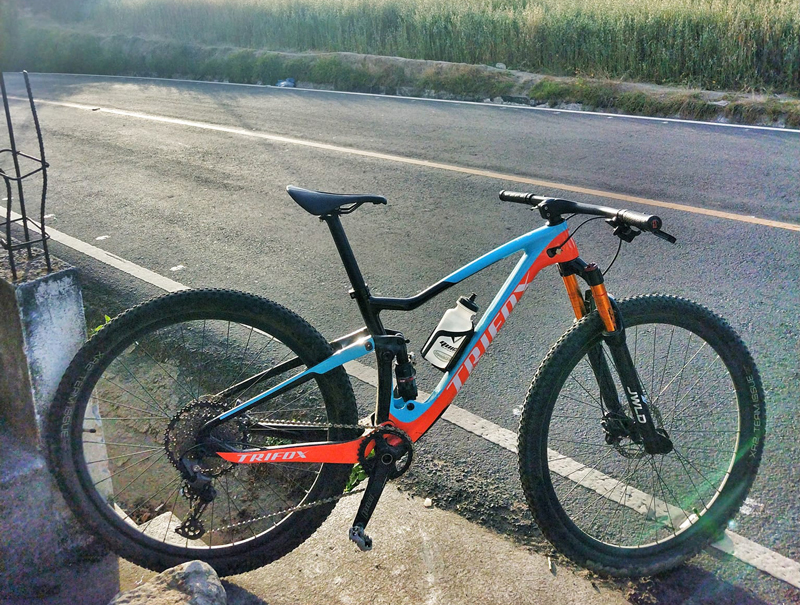
If you're a 1.70m tall rider looking for a mountain bike frame that's efficient, lightweight, and comfortable to ride, the Trifox Carbon MTB Frame should be top of your list. With its advanced suspension system, aesthetic appeal, and high-quality carbon fiber material, it offers the best performance for riders of this height.
Whether you're an experienced or novice rider, Trifox delivers the best in terms of durability, agility, speed, and overall riding experience. Get your Trifox frame, take your biking experience to the next level, and explore the great outdoors with ease.
























































